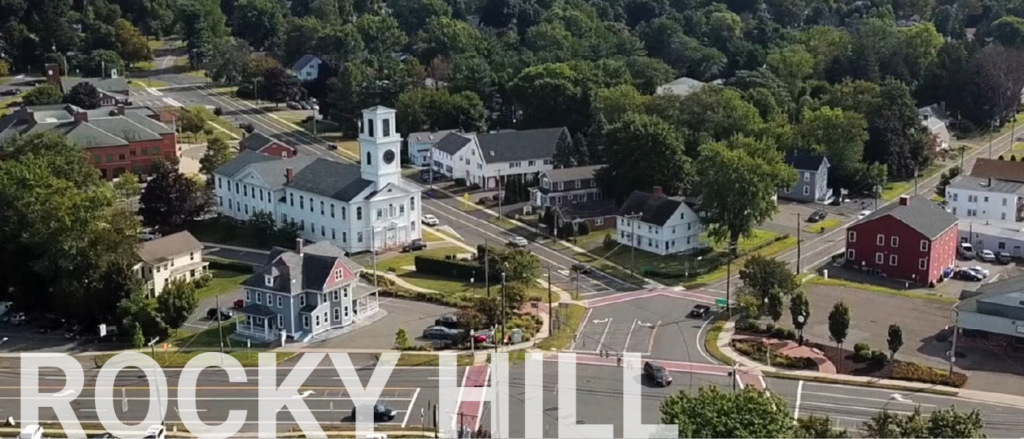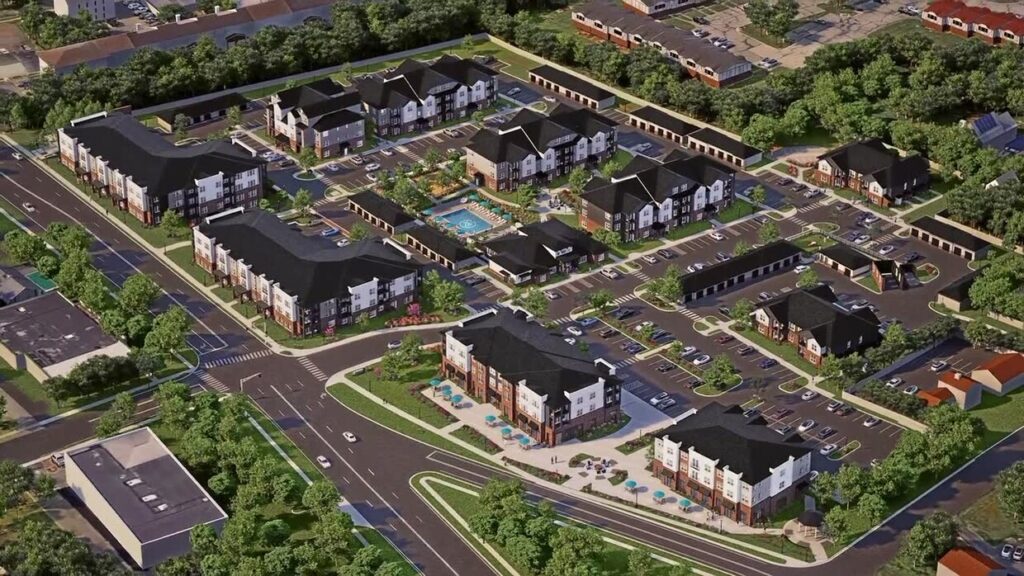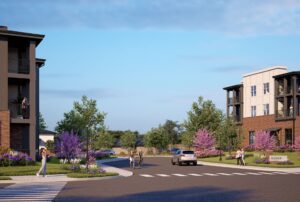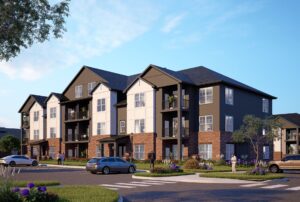Economic Development Newsletter
March 2025

ESSEX, CONNECTICUT
Rocky Hill, a member town of the Middlesex Chamber, is located in Hartford County. Originally the land of the Wangunk Tribe, the town was incorporated in 1843, and named for the trap rock ridge that rises in the northeast. Rocky Hill's location on the Connecticut River made it a natural port and an early center for shipbuilding, agriculture, and trade. The Rocky Hill-Glastonbury Ferry started in 1655, is one of the country's oldest continuously operating ferries.
Rocky Hill is the second-largest town in the Chamber’s membership and boasts a strong economy comprised of retailers, restaurants, and the healthcare, service, and manufacturing industries among the over 1,200 businesses in town.
TOWN STATS
General
Current Population: 20,705
Median Age: 44
Median Household Income: $96,733
Economy
Top Industries
1. Government
2. Health Care and Social Assistance
3. Professional, Scientific, and Tech Services
4. Retail
5. Admin and Support and Waste Management
Housing
Median Home Value: $320,400
Median Rent: $1,665
Housing Units: 9,223
From 2024 Town Profiles courtesy of AdvanceCT and CT Data Collaborative.
Economic Development Highlights
Rocky Hill and its neighbor Wethersfield experienced 23 traffic fatalities along the Silas Deane Highway between 2017 and 2021. With funding from the Safe Streets and Roads for All (SS4A) Grant Program, the towns are currently conducting an assessment of current conditions to identify future safety improvements along the 4.1-mile segment of the highway between the Wethersfield/Hartford line and Parsonage Street in Rocky Hill. After the assessment, both short- and long-term transportation improvements will be identified to enhance safety, accessibility, and connectivity for vehicles, public transit, cyclists, and pedestrians.
Glastonbury Avenue links the town’s primary commercial corridor along Silas Dean Highway to Meadow Road and Pratt Street. Along its route, there are many housing subdivisions, multi-family homes, public parks, schools, municipal offices, a public transit route, and an officially designated Connecticut Greenway. To bridge the gap in the town’s sidewalk network, Rocky Hill will construct a 2,300-foot sidewalk along Glastonbury Avenue to establish a pedestrian-friendly route connecting the Silas Dean Highway to a section of Main Street and Ferry Park, facilitating access to shopping, restaurants, outdoor recreation, and the Connecticut River.

Alandra Maine, Economic & Business Development Manager, Town of Rocky Hill
After a two-year vacancy in the Rocky Hill Economic Development Office, Alandra Maine joined in November 2024 to lead the town’s economic and business development initiatives. Currently, Alandra is focused on creating a business directory, enhancing community engagement, fostering an arts and culture movement, and reaching out to existing businesses, newly established businesses, and those with the potential to relocate to Rocky Hill. Working collaboratively with the planning department, Alandra is also involved with the Complete Streets project and updating the Plan of Conservation and Development.
Before working in Rocky Hill, Alandra was with the Middlesex County Chamber of Commerce, where she witnessed firsthand the importance of business development and community engagement for the health of a town, a region, and the state’s economic prosperity.

Kelson Row
Breaking ground in May 2024, Kelson Row is the long-anticipated redevelopment of the 12.1-acre property - the former Ames headquarters – located at 2418 Main Street in Rocky Hill. Envisioned as more than just new housing, Michael Belfonti, CEO of the Belfonti Companies, imagines a convenient and vibrant community, a central gathering place that embodies the best of the live-work-play concept, and a village that fosters an urban, less car-dependent lifestyle in historic Rocky Hill.
The name pays homage to the town’s rich shipbuilding history and proximity to the Connecticut River. A kelson (or keelson) is a centerline structure fastened to the keel to strengthen the ship’s framework. The property’s design mirrors the traditional, walkable New England town center.
The $60 million development includes ten residential buildings with 225 one- and two-bedroom pet-friendly apartments leased at market, workforce, and accessible rental rates. Kelson Row also features a clubhouse with co-working and conference areas, a game room equipped with billiards, shuffleboard, and foosball, a fitness center, and a pet spa. Residents can enjoy an in-ground pool, fire pit, lawn game area, and meditation garden outdoors. The Belfonti Companies has partnered with New England Retail Properties to assess the community's needs as they fill the nearly 16,000 square feet of mixed-use space – The Shoppes at Kelson Row - which enjoys visibility along the Silas Deane Highway.
Several buildings are leasing now, and the Kelson Row website helps prospective residents view and select from a variety of available floor plans. The community will be fully built by Spring 2026.
What is the role of an economic developer?
Economic developers, whether they are professionals or volunteers, undertake a range of tasks to support their community’s economic growth.
- Business Retention and Expansion: A vital element of economic development, BRE programs support existing businesses in overcoming economic challenges and facilitate expansions that generate new jobs.
- Marketing and Attraction: Developing and implementing campaigns to promote their community to current and prospective businesses.
- Entrepreneurship and Small Business Development: Economic developers frequently strive to offer access to capital, incubator space for cultivating innovative ideas, or technical assistance to help navigate regulatory processes.
- Real Estate Development: Economic developers often participate in significant real estate development projects, particularly in industrial parks, incubators, brownfield redevelopment, and housing, especially when public sector support is essential for ensuring equitable development within a community.
- Workforce Development: Economic developers work in partnership with workforce development agencies to foster a robust and resilient talent pool for current and future businesses in their communities.
- Strategic Planning: Economic developers are involved in developing and executing a community or region’s plan of conservation and development (POCD).
- Disaster Recovery and Resiliency: Economic developers are crucial in assisting their communities to prepare for and recover from economic disruptions.
- International Opportunities: Economic developers frequently engage in international opportunities to support their local and regional economies, including attracting foreign direct investment (FDI), assisting businesses in exporting to overseas markets, and staying informed about current trade issues and their potential impact on the economy.

Rocky Hill Arts Now
Launched just this month, Rocky Hill Arts Now, a new non-profit in Rocky Hill, aims to promote and support public art initiatives in town. Inspired by the overwhelming community support for a Pride Crosswalk, the organization is committed to fostering inclusivity and creative expression in public spaces and sees public art as an economic driver for the town. In addition to the initial Pride Crosswalk project, the nonprofit will collaborate with local artists and support various art initiatives, including Make Music Say, the art departments at the Rocky Hill Schools, and the newly formed theater program, The Hillhouse Players. "Public art has the power to bring people together, spark conversations, and create a sense of belonging—not to mention serving as an economic driver. Rocky Hill Arts Now is about taking that first step: building a more vibrant, creative, and inclusive community, one project at a time." – Allan Smith, Founder & Board Chair.
Follow Rocky Hill Arts Now on Instagram (@rockyhillartsnow), and attend their upcoming meet and greet on Sunday, April 27th at the Academy Hall Museum.










